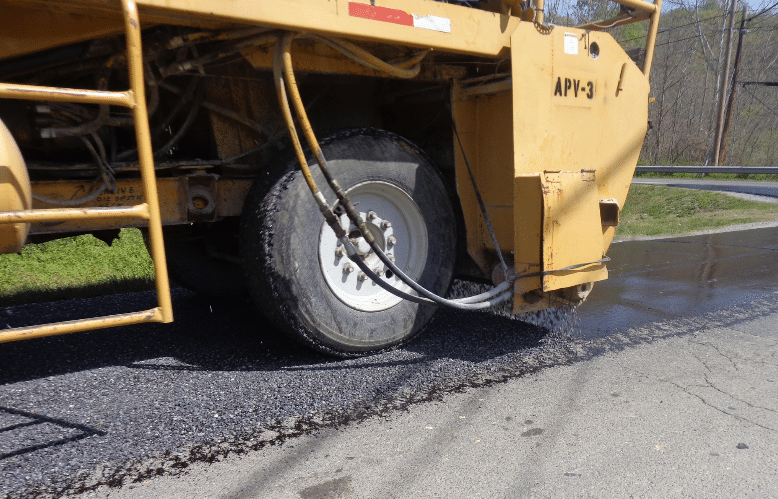
When doing chip seal, the pave-pres team has weather AND temp to monitor to get timing right.
Amid these ambient conditions, the emulsion itself needs to be sprayed at a temperature of 180 degrees F (or higher) to ensure it sprays correctly.
Then, the chip (aggregate) needs to be rolled within two minutes of spreading atop the emulsion. The chips are going down almost immediately, and the roller will come along to knead them into position before the emulsion can set and glue them into positions that might not be ideal. (This may mean you want more than two rollers on the scene, depending on lane width and the “weather” mentioned above.)
The ideal compactor for this operation is the pneumatic-tired roller, moving at about 3 miles per hour, so that it kneads and “smooshes” the chips into place. As a former engineer at Asphalt Institute taught me back in 1998, “Push them into their fat, dumb, happy places.” Whatever it takes to ensure you embed the rock perfectly.
To complete the seal, you’ll broom the new surface, and this takes ambient conditions into consideration again. You want to ensure 85% of the moisture in the emulsion has evaporated before you sweep. You also want to make sure the roller has made at least three passes on the chip. Then broom it to ensure the emulsion has a good hold on the aggregate—you’re ensuring its adhesive strength before turning it over to traffic.
Have you already subscribed to the print magazine in time to receive our May issue? That one includes our PreservationPro supplement with project stories and how-to info for the maintenance and preservation of asphalt pavements. Subscribe for free at this link and forward this email to members of your team who may also benefit from the information!
Get tips like this delivered to your inbox each week. Subscribe to our Toolbox Tips newsletter today!